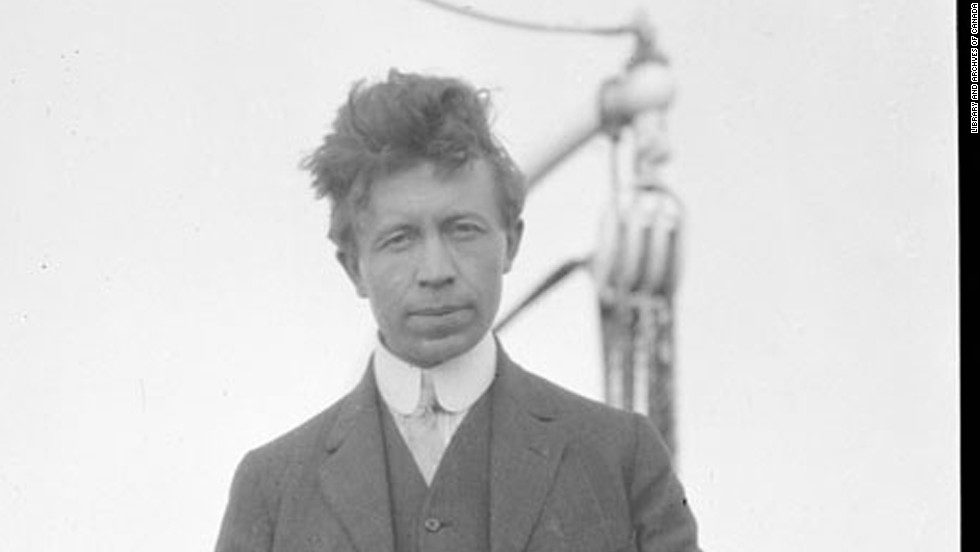From Wikipedia:
Vilhjalmur Stefansson (Icelandic: Vilhjálmur Stefánsson) (November 3, 1879 - August 26, 1962) was a Canadian Arctic explorer and ethnologist...
Stefansson is also a figure of considerable interest in dietary circles, especially those with an interest in very low-carbohydrate diets. Stefansson documented the fact that the Inuit diet consisted of about 90% meat and fish; Inuit would often go 6 to 9 months a year eating nothing but meat and fish - what was perceived to have been a no-carbohydrate diet. He found that he and his fellow explorers of European descent were also perfectly healthy on such a diet. While there was considerable skepticism when he reported these findings, they have been borne out in later studies and analyses. In multiple studies, it was shown that the Inuit diet was a ketogenic diet although a percentage of its calories are derived from the glycogen found in the raw meats, although the native Eskimo ate a diet of primarily stewed (boiled) fish and meats. When medical authorities questioned him on his findings, he and a fellow explorer agreed to undertake a study to demonstrate that they could eat a 100% meat diet in a closely observed laboratory setting for the first several weeks, with paid observers for the rest of an entire year. Stefansson was compensated for his efforts by the American Meat Institute.
Some years after his first experience with the Eskimos, Dr. Stefansson returned to the Arctic with a colleague, Dr. Karsten Anderson, to carry out research for the American Museum of Natural History. They were supplied with every necessity including a year's supply of 'civilised' food. This they declined, electing instead to live off the land. In the end, the one-year project stretched to four years, during which time the two men ate only the meat they could kill and the fish they could catch in the Canadian Arctic. Neither of the two men suffered any adverse after-effects from their four-year experiment. It was evident to Stefansson, as it had been to William Banting, that the body could function perfectly well, remain healthy, vigorous and slender if it used a diet in which as much food was eaten as the body required, only carbohydrate was restricted and the total number of calories was ignored.
The results were published, and Anderson had developed glycosuria during this time, which is normally associated with untreated diabetes. But unlike the pathology of diabetes, in this particular study, glucosuria was present in Anderson for 4 days and coincided only with the giving of a 100 gm of glucose for a tolerance test and with the first 3 days of his pneumonia, where he received fluids and a diet rich in carbohydrate. Once that situation resolved, the glucosuria disappeared.
Comment: This is a well-known effect of being in a fat adapted state - if one takes a sudden bolus of sugar, the body is overwhelmed and goes temporarily 'diabetic'. If doctors understood this, they would realize that the glucose tolerance test is not appropriate for those on a low-carbohydrate diet. Not only is it dangerous, but the results of the test mean absolutely nothing.
However, Stefansson and Andersen's doctors admitted that their subjects were unable to survive on the significantly higher protein diet that had been observed in the early stages of the dietary experiment. This was due to the doctors' insistence on "normal cuts" of meat that were higher in protein and lower in fat as compared to their earlier experiences on the Inuit diet, and the two white explorers could only complete the experiment by eating their own choices of meat which in effect restricted the higher protein and significantly increased the fat intake.
Comment: This is a also a well-known effect, known as "rabbit starvation"; eating too much protein not balanced by the proportionate quantity of fat. See: How much protein should you be eating?
In 1928, Stefansson and Anderson entered Bellevue Hospital, New York for a controlled experiment into the effects of an all-meat diet on the body. The committee which was assembled to supervise the experiment was one of the best qualified in medical history, consisting as it did of the leaders of all the branches of science related to the subject. Dr. Eugene F. DuBois, Medical Director of the Russell Sage Foundation (subsequently chief physician at the New York Hospital, and Professor of Physiology at Cornell University Medical College) directed the experiment. The study was designed to find the answers to five questions about which there was some debate. The results of the year-long trial were published in 1930 in the Journal of Biological Chemistry and showed that the answer to all of the questions was: no. There were no deficiency problems; the two men remained perfectly healthy; their bowels remained normal, except that their stools were smaller and did not smell. The absence of starchy and sugary carbohydrates from their diet appeared to have only good effects. Once again, Stefansson discovered that he felt better and was healthier on a diet that restricted carbohydrates. Only when fats were restricted did he suffer any problems. During this experiment his intake had varied between 2,000 and 3,100 calories per day and he derived, by choice, an average of eighty percent of his energy from animal fat and the other twenty percent from protein.
Comment: The entire interview is very interesting, but to see the part specific to diet, skip ahead to 11:51.





Stefansson discussed, at one point, the subject of organ meat, which he said was folklore; the Inuit feed it to the dogs but did not particularly eat it, unless in emergency, it was said.
Thanks for posting this article!